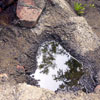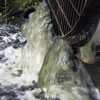-
Products
- Lab Instruments
-
Lab Meters and Probes
Calibration Standards Sension+ Meters and ProbesOther Meters and Probes Radiometer Probes
- Chemistries, Reagents, and Standards
-
Online Analyzers
Ammonium Analysers Ammonia Monochloramine Analyzers Chlorine Analyzers
- CL17sc
- CL10sc Amperometric
- 9184 sc Amperometric
- Ultra Low Range CL17sc Colorimetric Chlorine Analyser
EZ Series Analysers- Iron
- Aluminium
- Manganese
- Phosphate
- Chloride
- Cyanide
- Fluoride
- Sulphate
- Sulphide
- Arsenic
- Chromium
- Copper
- Nickel
- Zinc
- Ammonium
- Total Nitrogen
- Total Phosphorus
- Phenol
- Volatile Fatty Acids
- Alkalinity
- ATP
- Hardness
- Toxicity
- Sample Preconditioning
- Boron
- Colour
- Nitrate
- Nitrite
- Silica
- Hydrogen Peroxide
- EZ Series Reagents
- EZ Series Accessories
- EZ sc Series Inorganics
- EZ sc Series Metals
- EZ sc Series Nutrients
- Flow and Collections
-
Online Sensors and Controllers
pH & ORP Sensors
- 12mm pH/ORP
- 8362 sc High Purity
- Combination pH/ORP
- Differential pH
- Digital Differential ORP
- Digital Differential pH
- LCP ORP
- LCP pH
Conductivity Sensors- 3400 Analogue Contacting
- 3400 Digital Contacting
- 3700 Analogue Inductive
- 3700 Digital Inductive
- 9523 Cation Conductivity
- 9525 DCCP System
- Drinking Water Panels
- Dual Parameter Monitoring Panel
- Single Parameter Monitoring Panels
- Water Quality Monitoring Panel (WQMP)
- Automated Lab Systems
-
Multiparameter Online Panels
Single, Dual, Multi-parameter Online Panels
- Drinking Water Panels
- Dual Parameter Monitoring Panel
- Single Parameter Monitoring Panels
- Water Quality Monitoring Panel (WQMP)
- Claros Water Intelligence System
- Test Kits & Strips
-
Microbiology
Prepared Media
- BARTS
- Liquid MPN
- MUG Tube
- Membrane Filtration
- Paddle Testers
- Presence-Absence
- Total Count Media
- Yeast and Mold
Labware- Accessories
- Funnels, Pumps & Manifolds
- Microbiology Filters
- Petri Dishes & Accessories
- Sampling Bags
- Vials, Tubes, Bottles & Racks
-
Lab Equipment and Supply
ApparatusInstrumentsGeneral Lab Consumables Safety EquipmentBooks and Reference Material Glassware/Plasticware
- Samplers
-
Hach eLearning
Lab Product Training Process Product Training
- AN-ISE sc
- Amtax sc
- B3500
- B7000
- CL17sc
- Differential pH Sensor
- Filtrax Sample Filtration Systems
- LDO sc
- Nitratax sc
- Orbisphere 6110
- Phosphax sc
- SC1000
- SC200
- SC4500
- Solitax sc
- TU5300sc/TU5400sc
- Electrochemistry
- Parameters
- Software Solutions
- Industries
- Support
- News & Events
Application - Source Water Monitoring
Application Overview

Source water can be vulnerable to accidental or intentional contaminants and weather related or seasonal changes. Monitoring the quality of your incoming source water enables you to anticipate changes to the treatment process that are needed to react to storms, algal blooms, industrial discharge, chemical spills, reservoir stratification/destratification, construction activity, sewage spills and other natural or man-made occurrences.
Groundwater

Groundwater is the source water for the majority of small drinking water facilities.
The implementation of the Ground Water Rule is requiring many of the small systems to disinfect the groundwater to provide additional microbial protection. Groundwaters are usually low in organic matter, which makes disinfection byproduct formation not of concern. Groundwater, however, does contain compounds that, while not harmful for human consumption, can provide treatment challenges to systems that are using chlorine for the first time.
With analytical testing, you can:
- Establish a chlorine disinfection strategy
- Achieve accurate free chlorine measurements given known interferences
- Comply with the Ground Water Rule
| Key Parameters |
|---|
| + Ammonia |
| + Free Chlorine |
| + Iron |
| + Manganese |
| + pH |
| + Sulfide / Hydrogen Sulfide |
| + Chlorine Demand |
Surface Water

Surface water is the source water for the majority of people served with potable water. Surface water generally includes lakes, rivers and reservoirs. Because surface water is exposed to natural and man-made influences, it has a broader exposure to organic matter responsible for disinfection byproduct formation.
With analytical testing, you can:
- Determine the best disinfection strategy based on your unique source water
- Control the process in real-time based on source water conditions
- Establish a baseline for tracking DBP removal
| Key Parameters |
|---|
| + Ammonia |
| + Free Chlorine |
| + UV254 |
| + TOC |
| + Iron |
| + Manganese |
| + pH |
| + Turbidity |
| + Alkalinity |
| + Chlorine Demand |
| + THM Formation Potential |
Blending of Source Waters

Blending is the mixing of two or more source waters. Blending can include a raw source water or treated water and is a strategy chosen due to water availability or to achieve certain water quality objectives. This section focuses on parameters needed when treated waters are used in blending and only parameters that affect the disinfection process.
With analytical testing, you can:
- Prevent unexpected water quality issues
- Meet water quality objectives of blending
- Keep DBPs in check
| Key Parameters |
|---|
| + Free Chlorine |
| + Total Chlorine |
| + Monochloramine |
| + Ammonia |
| + pH |
| + THM Formation Potential |



 Recurring Orders
Recurring Orders 


